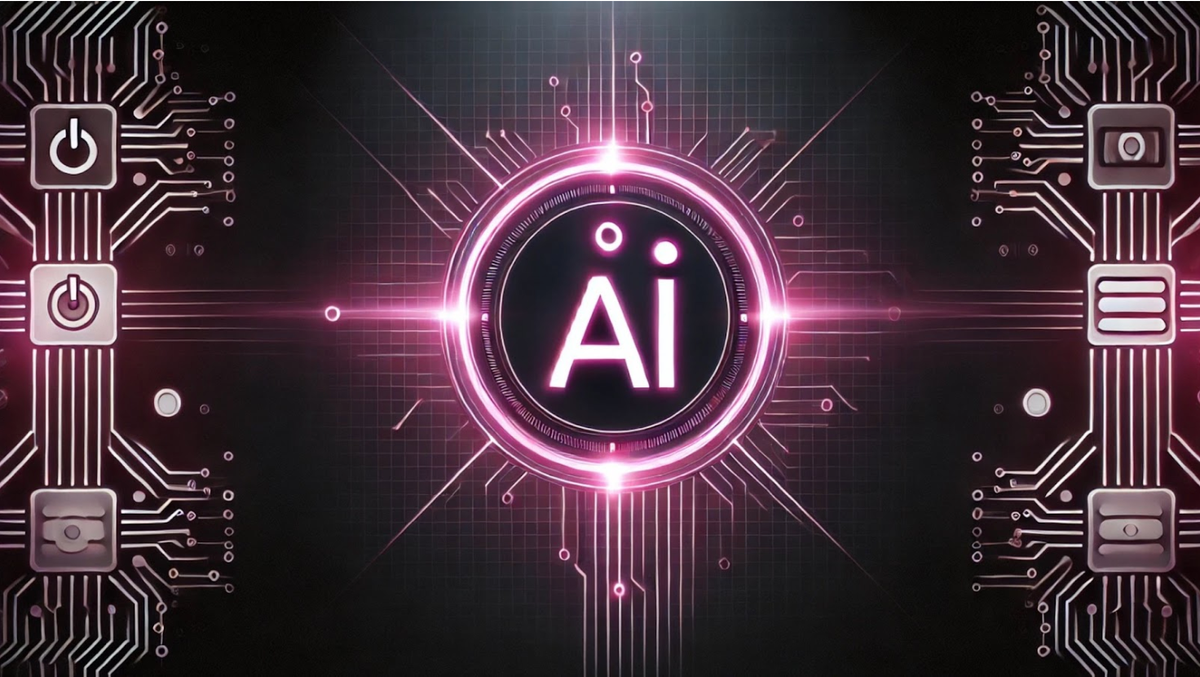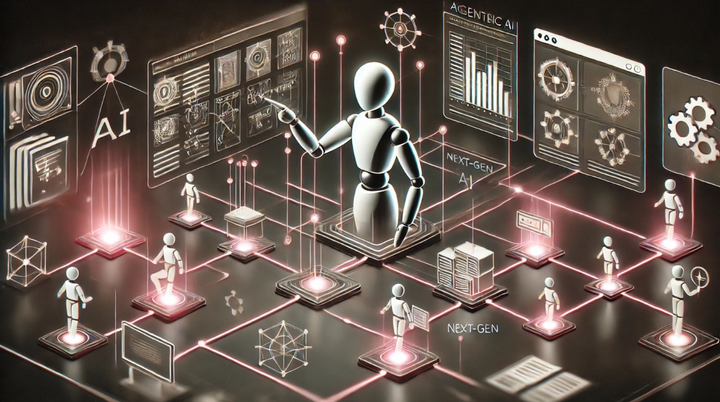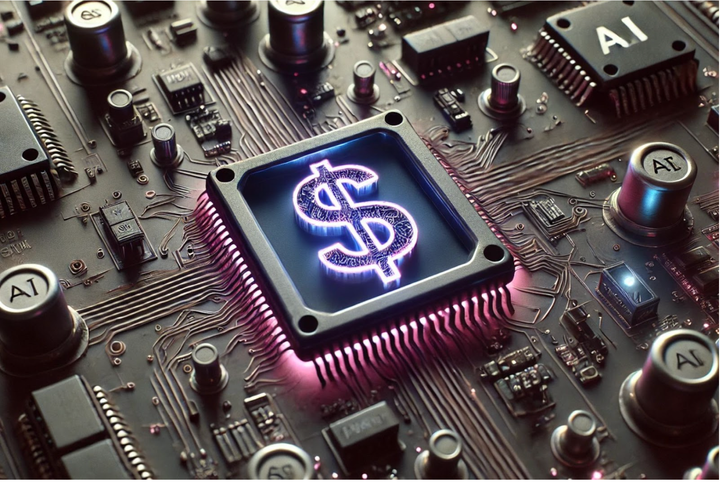How Much Energy Does AI Use?

Artificial Intelligence (AI) enables businesses to solve complex problems faster than ever. However, as decision-makers consider implementing AI solutions, one key question arises: How much energy does AI actually consume?
The answer is not straightforward. AI's energy usage depends on factors that include:
- The size of the model
- The infrastructure it runs on
- How frequently it's used
In this article, we’ll break down what the energy realities of AI might mean for your business, and we’ll provide clear analogies to help you make informed decisions about integrating AI into your operations.
Understanding AI’s Energy Consumption
Let’s first understand the basics of how energy is measured. For some business leaders, terms like kilowatt-hours and gigawatts might seem abstract. But breaking them down into everyday comparisons can make things clearer.
Source: https://www.solarisesolar.com/watts-kilowatts-and-megawatts-and-how-to-convert-them/
- Watt (W): A unit of power that measures how fast energy is consumed. For example, a common LED light bulb uses 7-10 watts of power.
- Kilowatt (kW): Equal to 1,000 watts, kilowatts are used to measure larger systems, like a data center. For instance, running multiple servers in a small data center might consume 20 kW of power.
- Kilowatt-hour (kWh): A measurement of energy consumption over time. If a system continuously uses 1 kilowatt of power for 1 hour, that equals 1 kilowatt-hour of energy consumed. This is how electricity companies usually bill energy usage.
- Megawatt (MW): Equivalent to 1,000 kilowatts or 1 million watts. Energy consumption is often measured in megawatts for AI systems running in large data centers.
- Gigawatt (GW): Equal to 1,000 megawatts or 1 billion watts, gigawatts are typically used to measure power consumption at a national or industrial scale, including major AI infrastructure.
Now, when it comes to AI, computational resources such as the number of GPUs, CPU cores, and memory play a key role in determining how much energy is consumed:
- GPU (Graphics Processing Unit): These specialized processors handle complex, parallel computations, making them ideal for AI training. However, they require a lot of power, especially when running large models continuously.
- CPU (Central Processing Unit): The general-purpose processor that handles basic tasks. While it consumes less power than a GPU, it’s less efficient for large-scale AI computations.
- Memory (RAM): This short-term storage holds data for quick access during computations. Larger AI models require more memory, increasing energy consumption as they process larger datasets.
For example, training a large AI model can involve thousands of GPUs running continuously, each drawing significant power. The more computational resources your AI system needs, the more energy it consumes. Smaller, more efficient models, like Small Language Models (SLMs), help reduce the need for GPUs, CPUs, and memory, lowering energy usage.
To better understand how to implement AI technologies in your business, brush up on our AI lingo terms.
How AI Energy Usage Compares to Other Technologies
To understand AI's energy demands, let’s compare it to familiar technologies.
- Smartphone charging: A typical smartphone uses 10 to 20 watts of power.
- Training of GPT-4: Consumed over 50 gigawatt-hours (GWh) of electricity—equivalent to the annual electricity usage of 3,600 U.S. homes.
- Training of GPT-3: Used 1,287 megawatt-hours (MWh), equivalent to driving an electric vehicle around the Earth 1,500 times.
These numbers dwarf the energy requirements of traditional IT systems, which primarily deal with storage or file processing.
AI's energy consumption is not limited to training models. Post-deployment operations such as running inferences and processing real-time data require significant power, though typically less than training. Still, AI servers demand much more energy than traditional servers.
A rack of AI servers can consume between 30 to 100 kilowatts (kW), compared to 7 kW for traditional server racks. As AI adoption grows, data centers housing these servers are expected to double their electricity consumption by 2030.
This comparison shows that AI requires significantly more energy than traditional computing technologies.
Factors That Affect AI’s Energy Usage
Several key factors drive AI's energy consumption, including the infrastructure that powers AI systems, the complexity of the models, and how frequently these systems are used.
Data Centers and Infrastructure
Image from VPM
AI relies on high-performance hardware, particularly GPUs, housed in data centers. In addition to powering these systems, a large portion of the energy is used to cool the hardware to prevent overheating.
Regions with a high concentration of data centers, like Northern Virginia, are already feeling the pressure on local energy grids, with energy consumption nearing that of large populations.
According to Goldman Sachs, data centers currently consume around 1-2% of global power. Specifically in the U.S., data centers used 3% of the country's power in 2022 and are projected to use up to 8% by 2030. The future of AI energy consumption is closely tied to how these data centers manage both power generation and cooling.
Model Development vs. Daily Use
Training large AI models is extremely energy-intensive because it requires substantial computational power. The complexity of the model determines how much energy is used. Daily usage of AI systems—especially those that provide real-time processing or frequent updates—also contributes significantly to energy consumption.
Post-deployment, AI systems still require energy for running inference, the process by which the model generates responses or predictions from new data. Deploying a large language model for real-time applications can notably increase electricity demand, especially as these models constantly process and respond to inputs.
Model Size and Complexity
Larger models consume significantly more energy during training and deployment compared to smaller models, especially those with hundreds of billions to trillions of parameters (like large language models of LLMs which sometimes have 1.8+ trillion parameters).
Smaller, more efficient models – such as Arcee AI’s Small Language Models (SLMs) – offer a solution by using far less computational power than LLMs while maintaining strong performance. Also, innovations such as model distillation, model merging, and Spectrum training (all pioneered and productized by us here at Arcee AI) are helping to make AI systems more energy-efficient.
- Model distillation compresses large models into smaller ones by "teaching" a “student ”model to perform the same tasks.
- Model merging involves no training (so no GPUs). By combining two or more neural network models into a unified model, it significantly reduces the time and resources required for training from scratch.
- Spectrum: optimizes the training process of LLMs by selectively training specific layers based on their signal-to-noise ratio (SNR) to reduce the time and computational power needed during training.
The Cost of AI’s Energy Usage
AI's energy consumption comes with a price, and as models grow more powerful, so do the energy costs. For instance, training a large-scale model like GPT-4, which consumed over 50 GWh of electricity, can lead to millions in energy expenses—around $3.5 million USD at average U.S. industrial rates.
But it's not just about training—ongoing operations, such as running inference and real-time applications, also add to the energy bill. As AI data centers expand, powering, cooling, and infrastructure maintenance costs can escalate quickly. This reality makes energy one of the largest operating expenses for AI-driven businesses. It’s estimated that global energy consumption from computing could rise 8-21% by 2030 if the growth of AI continues at the current pace.
This is where Arcee AI makes a difference. By developing energy-efficient Small Language Models (SLMs), Arcee AI helps businesses reduce energy consumption from their AI initiatives and, in turn, lower operational costs.
Our innovative tools, including MergeKit, DistillKit, and Spectrum, allow developers to build high-performing AI models without sky-high energy demands.
- MergeKit can scale from a high-end research cluster all the way down to a personal laptop with no GPU and limited RAM.
- DistillKit distills large models into smaller ones, lowering the energy needed for inference.
- Spectrum cuts training time and compute by 50% over traditional methods.
These tools and techniques enable developers to deploy efficient AI models while minimizing energy costs.
Arcee AI’s commitment to sustainability through energy-efficient solutions means that companies can adopt powerful AI systems while cutting down on both their energy usage and costs. Check out Arcee.ai to learn more.
Energy Efficiency in AI: What Can Be Done?
As AI continues to grow, businesses are looking for ways to make AI models more energy-efficient without sacrificing performance. Emerging trends focus on smarter technology, reducing both energy consumption and costs.
Use Small Language Models
One key development is the rise of smaller AI models designed to use less computational power while delivering high performance. These models, such as Arcee AI’s Small Language Models (SLMs), offer a solution by requiring fewer resources both during training and after the model is deployed.
Specialized AI Accelerator Chips
Image from IBM
Additionally, hardware optimization is advancing rapidly, with more companies adopting specialized chips like AI accelerators that efficiently handle AI tasks. These chips significantly boost performance because they can perform parallel processing, completing tasks in minutes or seconds that might take traditional chips hours or days.
Plus, the AI accelerator processes more data with lower power consumption than general-purpose chips.
Low-Power Algorithms
Low-power algorithms reduce energy consumption by focusing on only the most relevant data. For instance, in image recognition, these algorithms prioritize key features like edges and shapes, while in natural language processing (NLP), they focus on the context of words rather than processing unnecessary details.
Examples of relevant data include:
- Image recognition: Object outlines and key features.
- Speech recognition: Important phonetic patterns.
- Predictive text: Context and structure of previous sentences.
By combining these trends with the use of renewable energy sources for powering AI infrastructure, companies can reduce their environmental footprint and operational costs.
Looking to explore energy-efficient AI solutions? Book a demo with Arcee AI to learn more about how we’re leading the charge with sustainable AI technology.
FAQs about AI Energy Usage
How much electricity will AI use in the future?
According to the International Energy Agency (IEA), AI data centers currently use 1% of global electricity. By 2026, consumption is expected to exceed 1,000 terawatt-hours (TWh). As AI adoption grows, both model training and inference will contribute to rising energy needs.
How much power do AI servers use?
A standard server rack uses around 7 kW, but AI servers demand 30 to 100 kW due to their high computational power.Nvidia shipped 100,000 AI server units last year, which are expected to use 7.3 times the energy of traditional servers,underscoring the significant energy impact of scaling AI infrastructure.
Do I really need to worry about AI's energy consumption when considering GenAI solutions?
Yes, AI's energy consumption is a crucial factor. As AI scales, energy demands rise, impacting costs and sustainability. Considering energy efficiency in GenAI solutions is key for long-term viability.
TL;DR
AI's rapid advancements come with significant energy demands, from training large language models like GPT-4 to ongoing operations such as real-time data processing. As AI adoption grows, energy consumption is projected to rise sharply, making energy efficiency a key concern for businesses. Solutions like Small Language Models SLMs (pioneered by Arcee AI), AI accelerator chips, and low-power algorithms can help to reduce energy use while maintaining high performance. By adopting these innovations, companies can use AI while keeping their energy costs manageable.


